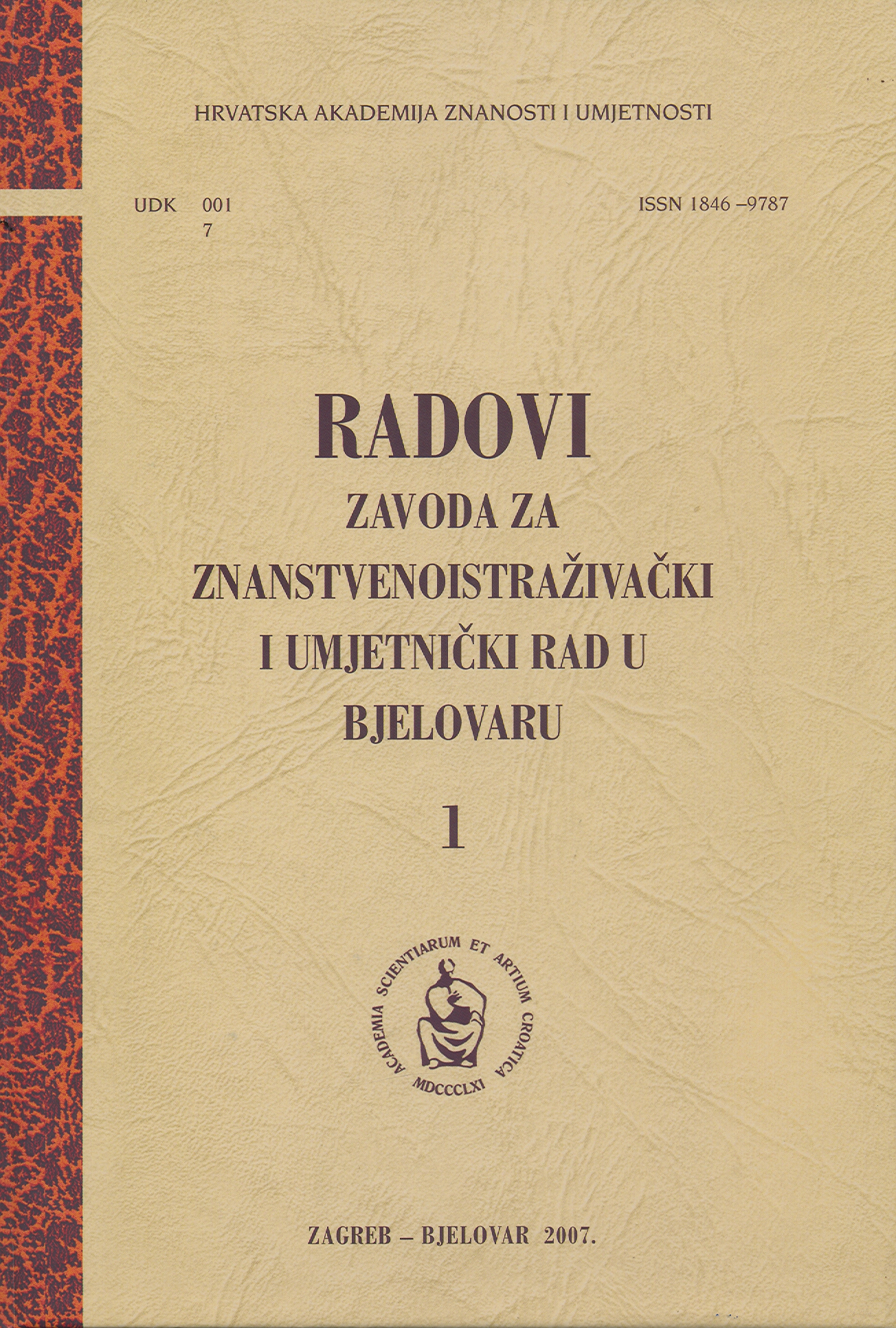Bjelovar prije Bjelovara
Bjelovar before Bjelovar
Author(s): Goran JakovljevićSubject(s): Archaeology, Local History / Microhistory, 13th to 14th Centuries, 16th Century, 17th Century
Published by: Hrvatska akademija znanosti i umjetnosti - Zavod za znanstvenoistraživački i umjetnički rad u Bjelovaru
Keywords: ancient time; Česmica; Jakozerdahel; tribal parish; Plavnica St. Benedict;
Summary/Abstract: The problems of urbanization in the area where Bjelovar is located today didn’t start with its formal establishment until 1755. It had started in ancient times, when settlements appeared in those areas, behind the Drava Limes, either as military camps that protected important communication lines or as villae rusticae belonging to military veterans who got their land within that area. Archeological findings of the narrower area of the town witness a settlement existing from the 2nd to 4th century, which was located along the longitudinal and transversal road communication that was crossing at that point, and it was guarded by a small military garrison. The settlement on the plateau between the Plavnica and the Bjelovacka rivers was set up either as an urban unit from a military fortress or as a civilian settlement which existed parallel with a military station. Today’s screen of Bjelovar’s centre has its starting point in the Roman concept of a town being the intersection of cardum and decumanum, where the most important element is a forum. After the time hijatus of several centuries, first bigger medieval properties, based on a Gentile base (first tribal parishes), overlapped or touched at their edge parts on the narrower Bjelovar area, so we cannot expect the logical urban structure; the properties are Česmica, Plavnica St. Benedict and Jakozerdahel. Those facts lead us to doubt the year 1420, which has been regarded up to now by recent authors as the year when Bjelovar was first mentioned in sources such as a “little fair place in Rovišće county”. By the downfall of the big Česmica and Plavnica Counties new urban possibilities were open in terms of more space, which were even more emphasized by the danger of Turkish attacks after they had overtaken Čazma and left the Svibovec fort on the Česma river.
Journal: Radovi Zavoda za znanstvenoistraživački i umjetnički rad u Bjelovaru
- Issue Year: 2007
- Issue No: 1
- Page Range: 54-70
- Page Count: 17
- Language: Croatian

